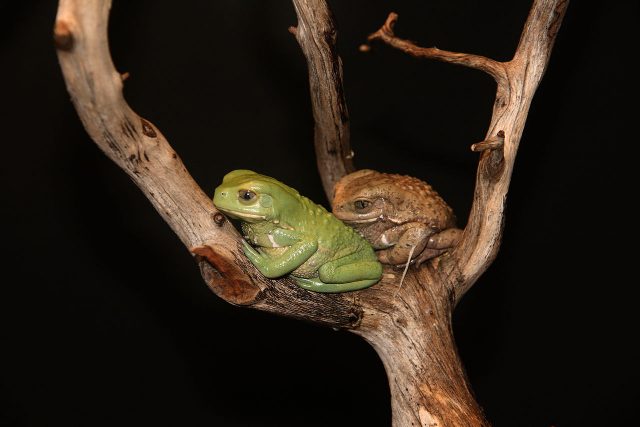Type the name of the breed you're looking for below
[wpdreams_ajaxsearchlite] Don't see the breed your're looking for? Click here and let us know!
Giant Monkey Frog
| Place of Origin and Range | Found on the Chaco of Argentina, Bolivia, Paraguay and Brazil. The subfamily consists of around 50 species in three well-known genera. |
| Description | Large size, opposable thumb and forefinger, green to brown back, white belly often delineated by a thin black line. White fingers and toes, green toe pads, and black rings on the lower side, groin and rear of thighs. |
| Adult Size | Can grow up to 4.5 in(11.25 cm) |
| Accommodation | These frogs "prefer habitats with plentiful floating vegetation, grasses, and cattails" and are often found in "small ponds, large lakes, marshes, and streams also can be found at night in a backyard swimming pool. Unlike many amphibians, they do not require artificial heating. They need a large (at least ten-gallon) terrarium and do best with a substrate that will hold some humidity, such as commercial shredded bark or coconut husk bedding, or untreated topsoil on the floor of their terrarium. Tree frogs are arboreal, so the height on the tank is more important than the length. A variety of things for climbing, such as plants or branches, should be in the habitat. A shallow water dish should be included. Captive frogs should not be handled any more than necessary; when necessary, clean gloves should be worn. |
| Lifespan | Can live 10+ years |
| Feeding / Diet | These frogs are insectivores, usually consuming flies, mosquitoes, and other small insects such as crickets. One study suggested the frog selects prey not by its size, but according to its activity level, with the most active prey being the most frequently eaten. |
| Breeding | It does not need to return to the ground during the mating season; rather, it lays its eggs down the middle of a leaf before folding the leaf, sandwiching the eggs inside. Its nest is attached to a branch suspended over a stream, so the hatching tadpoles drop into the water. |



